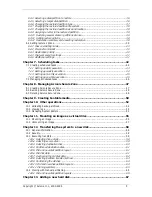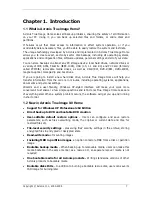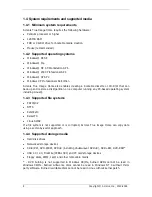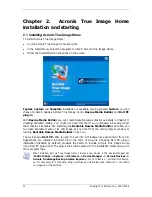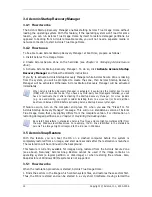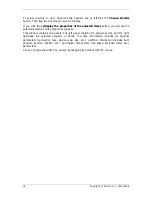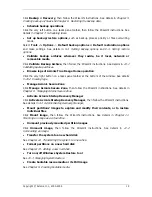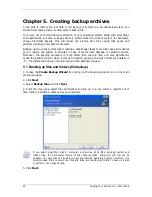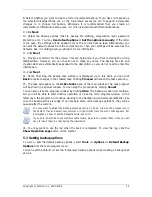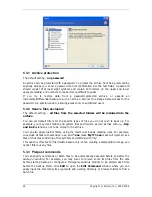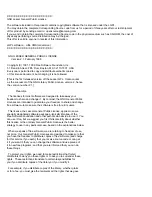
Chapter 3. General information and
proprietary Acronis technologies
3.1 The difference between file archives and disk/partition images
A backup archive is a file or a group of files (also called in this Guide “backups”), that
contains a copy of selected files/folders data or a copy of all information stored on selected
disks/partitions.
When you back up files and folders, only the data, along with the folder tree, are
compressed and stored.
Backing up disks and partitions is performed in a different way: Acronis True Image Home
stores a sector-by-sector snapshot of the disk, which includes the operating system, registry,
drivers, software applications and data files, as well as system areas hidden from the user.
This procedure is called “creating a disk image,” and the resulting backup archive is often
called a disk/partition image.
Acronis True Image Home stores only those hard disk parts that contain data (for supported
file systems). Further, it does not back up swap file information (win386.swp under Windows
98/Me and pagefile.sys under Windows NT/2000/XP) and hiberfil.sys (a file that keeps RAM
contents when the computer goes into hibernation). This reduces image size and speeds up
image creation and restoration.
A partition image includes all files and folders independent of their attributes (including
hidden and system files), boot record, FAT (file allocation table), root and the zero track of
the hard disk with master boot record (MBR).
A disk image includes images of all disk partitions as well as the zero track with master boot
record (MBR).
By default, files in all Acronis True Image Home archives have a “.tib” extension.
It is important to note that you can restore files and folders not only from file archives, but
from disk/partition images, too. To do so, mount the image as a virtual disk (see
Chapter 11.
Mounting an image as a virtual drive
) or start the image restoration and select
Restore
specified files or folders
.
3.2 Full, incremental and differential backups
Acronis True Image Home can create full, incremental and differential backups.
A
full backup
contains all data at the moment of backup creation. It forms a base for
further incremental or differential backup or is used as a standalone archive. A full backup
has the shortest restore time as compared to incremental or differential ones.
An
incremental backup
file only contains data changed since the last full or incremental
backup creation. Therefore, it is smaller and takes less time to create. But as it doesn’t
contain all data, all the previous incremental backups and the initial full backup are required
for restoration.
Unlike incremental backup, when every backup procedure creates the next file in a “chain,” a
differential backup
creates an independent file, containing all changes against the initial
full archive. Generally, a differential backup will be restored faster than an incremental one,
as it does not have to process through a long chain of previous backups.
12 Copyright © Acronis, Inc., 2000-2006





